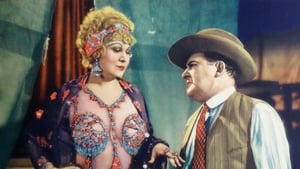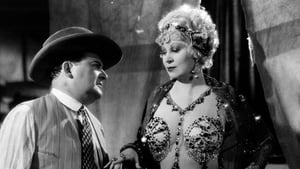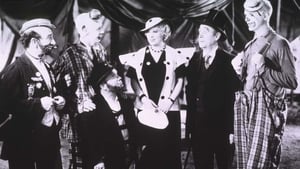Contact: info@alwanfilm.com
Video Sources 0 Views
- Watch trailer
- I'm No Angel


Synopsis
Table of Contents
ToggleReview: I’m No Angel 1933 Colorized- A Seductive Romp Through the Roaring Twenties

Introduction
“I’m No Angel” (1933) exudes the glamour and allure of the Roaring Twenties, inviting audiences to revel in its decadent charm and irreverent humor. In this review, we’ll explore the significance of this early Hollywood classic and its enduring legacy in the annals of romantic comedy.
Check The Full Colorized Movies List
Check Our Colorized Movies Trailer Channel
Understanding I’m No Angel 1933 Colorized: Director, Cast, and Genre
Directed by the legendary Wesley Ruggles, “I’m No Angel” (1933) epitomizes the golden age of Hollywood, showcasing Ruggles’ keen eye for visual storytelling and comedic timing. The film stars the incomparable Mae West, whose sultry charisma and sharp wit captivate audiences from start to finish. Blending elements of romance, comedy, and musical extravaganza, “I’m No Angel” (1933) transports viewers to a world of glitz and glamour, where anything is possible and love conquers all.
Exploring the World of I’m No Angel 1933 Colorized: Plot and Characters
At its core, “I’m No Angel” (1933) follows the exploits of Tira, a bold and audacious circus performer portrayed by Mae West, whose larger-than-life persona and penchant for mischief make her the talk of the town. When she catches the eye of a wealthy playboy, played by Cary Grant, sparks fly and passions ignite, leading to a whirlwind romance filled with laughter, tears, and plenty of scandal. Along the way, Tira encounters a colorful cast of characters who add to the film’s comedic hijinks and romantic escapades.
The Art of Film Colorization
Film colorization serves as a transformative tool that enhances the visual experience of classic movies, breathing new life into timeless stories and captivating audiences with vibrant hues. By digitally adding color to black and white films, colorization allows viewers to immerse themselves in the rich tapestry of cinematic worlds, exploring every nuance and detail with fresh eyes and renewed appreciation.
Early Colored Films: A Brief History
The history of colored films traces its roots back to the early days of cinema, with filmmakers experimenting with various techniques to add color to their creations. From hand-tinted frames to early Technicolor processes, the evolution of colored film has been marked by innovation and ingenuity, paving the way for the development of modern colorization techniques that continue to captivate audiences to this day.
I’m No Angel 1933 and Its Early Colored Version
The decision to release “I’m No Angel” (1933) in a colorized format was met with both excitement and trepidation. While some welcomed the opportunity to experience the film in vibrant color, others expressed concerns about the potential impact on its visual aesthetic. Nevertheless, the early colored version of “I’m No Angel” (1933) offers viewers a fresh perspective on the timeless tale of love and redemption, enhancing its emotional resonance and captivating audiences with its luminous beauty.
The Debate Over Film Colorization
The debate over film colorization continues to divide audiences and critics alike, with proponents praising its ability to breathe new life into classic movies and introduce them to a new generation of viewers, while detractors argue that it compromises the artistic integrity of the original work and diminishes its historical significance. As the debate rages on, filmmakers and audiences alike are left to ponder the merits and drawbacks of colorization in the ever-evolving landscape of cinema.
Examining I’m No Angel 1933 as an Early Colored Film
As with any colorized classic, the impact of colorization on “I’m No Angel” (1933) is a matter of personal interpretation. Some may argue that it enhances the film’s visual appeal and immerses viewers in its world, while others may feel that it detracts from the stark beauty of the original black and white version. Regardless of one’s stance on the issue, there’s no denying the enduring power of “I’m No Angel” (1933) as a timeless romantic comedy that continues to capture the hearts of audiences around the world.
Influence and Legacy: I’m No Angel 1933 Colorized’s Impact on Cinema
“I’m No Angel” (1933) has left an indelible mark on the world of cinema, inspiring countless filmmakers and captivating audiences with its timeless tale of love and redemption. From its unforgettable performances to its sparkling wit and irreverent humor, the film continues to resonate with viewers of all ages, reaffirming its status as a beloved classic of the romantic comedy genre.
Director’s Cinematic Legacy: Beyond I’m No Angel 1933 Colorized
Wesley Ruggles’ influence extends far beyond “I’m No Angel” (1933), with a diverse body of work that continues to captivate audiences around the globe. From “Cimarron” to “Arizona,” Ruggles’ films are celebrated for their wit, charm, and sophistication, solidifying his legacy as one of the preeminent directors of Hollywood’s Golden Age. Through his groundbreaking work, Ruggles has left an indelible imprint on the world of cinema, inspiring generations of filmmakers to follow in his footsteps.
Themes Explored in I’m No Angel 1933 Colorized
“I’m No Angel” (1933) explores a myriad of themes, from the transformative power of love to the pursuit of happiness in the face of adversity. Through its richly drawn characters and sharp-tongued dialogue, the film invites viewers to ponder the complexities of human relationships and the eternal quest for fulfillment. As audiences immerse themselves in the world of “I’m No Angel” (1933), they are reminded of the universal truths that bind us together and the enduring power of laughter to heal the soul.
Reception and Controversy Surrounding I’m No Angel 1933 Colorized
Upon its release, “I’m No Angel” (1933) received widespread critical acclaim, with many praising its sparkling wit, memorable performances, and irreverent humor. However, the decision to release the film in a colorized format sparked debate among purists, reigniting the age-old discussion surrounding film preservation and artistic integrity. Despite the controversy, “I’m No Angel” (1933) remains a beloved classic that continues to resonate with audiences of all ages, reaffirming its status as a timeless masterpiece of the romantic comedy genre.
Where to Watch I’m No Angel 1933 Colorized Online
For those eager to experience the timeless magic of “I’m No Angel” (1933), the film is readily available on popular streaming platforms such as Netflix, Amazon Prime, and Hulu. Whether you choose to watch it in its original black and white format or the early colored version, “I’m No Angel” (1933) promises to transport you to a world of laughter and love, where anything is possible and dreams come true.
FAQs About I’m No Angel 1933 Colorized
Q: Is “I’m No Angel” (1933) based on a true story? A: No, “I’m No Angel” (1933) is a fictional tale crafted by screenwriter Mae West, who drew inspiration from her own experiences and observations of human nature.
Q: Who are the main actors in “I’m No Angel” (1933)? A: “I’m No Angel” (1933) features the incomparable Mae West in the lead role of Tira, a bold and audacious circus performer whose larger-than-life persona and sharp wit captivate audiences from start to finish.
Q: What awards did “I’m No Angel” (1933) win? A: While “I’m No Angel” (1933) did not win any major awards, it received critical acclaim for its sparkling wit, memorable performances, and irreverent humor.
Q: Why was “I’m No Angel” (1933) released in a colorized format? A: The decision to release “I’m No Angel” (1933) in color was made to introduce the film to a new generation of viewers and enhance its visual appeal for modern audiences. While the choice to colorize the film sparked debate among purists, it ultimately allowed “I’m No Angel” (1933) to reach a wider audience and ensure its continued relevance in the annals of cinematic history.
Conclusion
“I’m No Angel” (1933) continues to shine as a shining example of the timeless allure of Hollywood’s Golden Age, reminding audiences of the enduring power of laughter, love, and irreverent humor to transcend the boundaries of time and space. Whether viewed in its original black and white format or the early colored version, the film captivates audiences with its sparkling wit, memorable performances, and irrepressible charm, reaffirming its status as a beloved classic of the romantic comedy genre. So, whether you’re a seasoned cinephile or a casual moviegoer, take a moment to revisit “I’m No Angel” (1933) and experience the magic of Hollywood’s Golden Age as never before.














